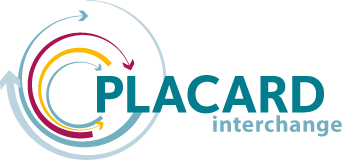High-level Risk Forum
OECD, Paris, 18–19 September
Our joint event, co-organised by the OECD Public Governance Directorate, focused on investment in resilient infrastructure, and brought together more than 20 experts and representatives from authorities of different countries.
The aim of the meeting was to showcase, share and discuss the different approaches and methodologies for cost benefit analyses (CBA), broader cost effectiveness analysis and the different tools used to inform and support infrastructure resilience investment decisions.
The first session explored the main challenges and questions for discussion during the two-day event. Analysing and evaluating the efficiency and effectiveness of different Disaster Risk Reduction (DRR) investments present a wide range of methodological challenges for practitioners, mainly for defensive or preventative infrastructure. In particular, the evaluation and comparison of the costs and benefits of DRR-project implementation, as well as the selection of efficiency decision criteria, were acknowledged as the main issues. Recommendations from the event aim to tackle a number of issues, including:
- Improving traditional cost-benefit analysis, for example, discount rate
- Assessing non-economic values of intangibles in the infrastructure projects
- How future changes in the environment, for example, climate change, can be meaningfully be addressed.
Modelling the net present value of resilience measures
This session was dedicated to comparing the present costs and future benefits of investments in DRR. As a result of the discussion, a set of existing discount rates were identified with a focus on variables in the calculation of discount rate values. The participants stressed the necessity of reducing existing discounting rates, which are currently up to 7% in the United States.
Assessing the value of intangibles
Here we considered the evaluation of impacts of infrastructure measures on non-market inputs and impacts, for example, human lives and health. It is obvious that such intangibles carry many economic and social welfare benefits which contribute to the creation of blended values (a blend of financial, social, and environmental values).
Methodologies that place a value on such intangibles proved to be of great interest to the experts during this session, and led to the development of specific recommendations. We found that the following methods of revealed preferences (methods of analyzing choices made by individuals) apply:
- Hedonic pricing method (HPM)
- Travel cost method (TCM)
- Cost of illness approach (CoI)
- Replacement cost or restoration cost method (RCM).
In addition, stated preferences utilise the following approaches:
-
- Contingent valuation method (CVM)
- Choice methods method (CMM)
- Life satisfaction analysis (LSA).
Monetisation of the benefits of multi-purpose resilient infrastructures
This session focused on the need to identify multiple benefits, for example, better livelihoods, unlocking development potential and creating “co-benefits”, from creating a single investment project within DRR objectives. For instance, existing triple dividend frameworks set a range of requirements for DRR projects:
- Avoid and reduce direct and indirect disaster risks and the actual losses
- Reduce background risk from disasters for unlocking development
- Generate development of co-benefits that are not dependent on the occurrence of disaster risks.
In this case, a CBA could be used as a tool to monetise and integrate the co-benefits of DRR projects. We explored which economic effectiveness tools can monetise or estimate the value of hard and soft resilience packages and their co-benefits.
Post-disaster analysis
Post-disaster analysis often highlights the disproportionate socio-economic impacts of a disaster experienced by different genders and social groups. It is important to consider the vulnerability of different population groups when analysing the impact of DRR projects.
Resilience of infrastructure systems for local emergency management
We focused on the L’Aquila earthquake in 2009 in this session. After the event, the Italian government spent EUR 965 million on seismic risk reduction activities, with the introduction of a seismic risk index which was used to allocate the funds among the regions. Examples of non-structural measures to reduce seismic risk were discussed to select the best solutions and provide recommendations for related DRR projects in the future.
Impact of community-based DRR projects
DRR infrastructure and projects can be small-scale, driven by community-level actors: community-based DRR measures can have a significant impact on reducing the total cost of disasters, despite being “small-scale”.
Tools such as comprehensive climate risk management (CRM), which reflect on the current and future climate-related risk, involve a layering of measures related to DRR and climate change adaptation (CCA) at local and national levels to enhance coverage of communities and population. CRM may include fiscal risk assessments with longer-term budget analyses and fiscal stress testing for economic effectiveness at national level, blended with local-level training and soft investments.
Assessment of the economic value of ecosystem-based measures
Usually, DRR projects incorporate both hard and soft infrastructure improvements, where the former provides physical protection and the latter reduces the exposure of communities to hazards. We discussed events in Colombia in order to identify the positive and negative sides of the country’s experience.
Conclusions
After two days of discussions and presentations, the participants summarised the main challenges in this area:
- Changes in governance are needed to meet the above-mentioned challenges
- Different CBA approaches (history, social welfare economics) are being used to identify the best projects in the area of DRR and CCA
- Inclusion of intangible factors differs in countries around of world;
- A wide range of discount rates is applied and there is a need to improve the existing approaches.
To address these challenges, we strongly recommend further cooperation and collaboration at events such as this. The exchange of experience, knowledge and practical solutions could help to further develop and improve CBAs and similar tools, and, in specific cases, suggest possible applications.


